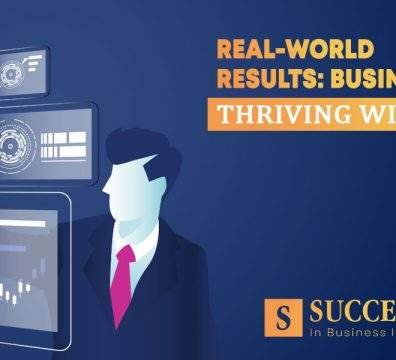Digital Transformation Facilities Management is a two-fold process that automates manual tasks and introduces a variety of data systems. It creates an improved environment with better service quality, productivity and performance, all backed by a powerful facility management software.
This digital transformation provides automation of processes, optimization of operations and the ability to interact with buildings and control their experience. It also enables data collecting and data quality management, offering employees the ability to personalize their experience.
The internal operations are reshaped and improved, with information sharing becoming easier, processes and performance being kept up to standard and transparency across the company increasing. Digital transformation in facility management services is long-term planning, but its benefits make it worth considering.
Why Is Digital Transformation Important For Facility Managers?
Digital transformation is an important tool for facility managers to consider in order to stay ahead of the competition and keep up with the changing environment. With digital transformation, facility managers can automate maintenance schedules, minimize asset downtime, and manage services in the cloud.
This can significantly reduce labor costs and increase productivity. Additionally, digital transformation can improve customer experience, operational processes, and business models to create a more efficient and effective workplace.
Digital transformation can also improve security measures, allowing for greater compliance and secure storage of data. Finally, digital transformation can help facility managers to meet sustainability goals, such as reducing the carbon footprint of the workplace.
Analyzing the Benefits of Digital Transformation for Facility Management
Digital transformation offers a variety of benefits for facility management, ranging from improved efficiency and increased security measures to modern sustainability efforts. Automation of maintenance schedules, asset management, and visitor tracking can all lead to significant cost savings, while cloud computing can help organizations scale their technology accordingly.
Additionally, storing files in a secure cloud software rather than allowing them to sit dormant can help to protect against cyberattacks and ensure compliance measures are met. By utilizing digital transformation strategies, facilities can improve customer relations, increase sales, and expand their internal offerings to create a forward-thinking environment.

What are the Three Critical Areas of Enterprise Digital Transformation?
1. Customer Experience: Digital transformation allows businesses to better understand customer needs and increase touchpoints for improved customer relations. By leveraging analytics, companies can provide a tailored experience for their customers.
2. Operational Processes: Automation is key to streamlining operational processes and gathering performance data. By using digital tools, companies can reduce labor costs and minimize asset downtime.
3. Business Models: Digital transformation requires businesses to change traditional practices with technology-focused ones. This allows companies to provide new services to potential customers and improve internal efficiency.
How to Plan for Digital Transformation in Your Facility
The digital transformation may seem like a daunting change for enterprise facility managers. Although it requires training, dedication, and continued innovation, there are many resources available to ease this transition, such as implementing logistics software like Intra. So, what role do we play in digital transformation? The cloud, of course.
Microsoft tells us that the cloud is “the delivery of computing services—including servers, storage, databases, networking, software, analytics, and intelligence—over the Internet (“the cloud”) to offer faster innovation, flexible resources, and economies of scale.” Cloud intelligence allows organizations to improve efficiency, scale their technology, and create a strategy for future expansion.
Software-as-a-service (SaaS) platforms like Intra use cloud computing, which has the perk of allowing centralized expert assistance from the software company managing and hosting the system, as opposed to companies having to buy the software entirely. A software subscription model can change with the needs of your business, which is one of the many advantages digital transformation offers companies. Some of the benefits are listed below.:
Improved Efficiency: Automating Maintenance Schedules and Minimizing Asset Downtime
Digital transformation can significantly improve the efficiency of facility management operations. By automating maintenance schedules and minimizing asset downtime, companies can improve operational processes significantly through the use of digital tools and collecting performance data.
Automating maintenance schedules reduces labor costs and the need for manual tracking, while minimizing asset downtime helps avoid costly system or hardware outages. Additionally, digital transformation can reduce the need for physical assets, allowing companies to utilize virtualization to reduce expenses. All of these improvements increase productivity and provide a more efficient working environment.
Increased Security Measures: Securing Files and Ensuring Compliance
Digital transformation is an integral part of modern business strategy, and a key benefit of this is improved security measures. Currently, only 5% of companies’ folders are adequately protected, and on average, every employee has access to 11 million files, making them vulnerable to cyberattacks.
Cloud computing provides the benefits of expert assistance on a centralized server, rather than companies needing to buy the software outright. This allows for a secure subscription model to meet the changing needs of businesses.
Through digital transformation, companies can store their files in a secure cloud software, reducing their risk of cyberattacks and ensuring compliance measures are met. Not only does this provide increased security for businesses, but it also helps to lower their carbon footprint, as well as save both time and money.
Modern Sustainability Efforts: Reducing Carbon Footprint and Increasing Efficiency
In today’s world, sustainability efforts are becoming increasingly important for organizations looking to reduce their carbon footprint and increase efficiency. Platforms such as Intra provide companies with the means to lower their carbon footprint through operational costs across their facilities, including HVAC and energy efficiency, asset maintenance and recycling, and more.
Additionally, digital transformation strategies can help organizations reduce labor costs while increasing productivity, streamline processes and improve security measures. With the right software and tools, companies can achieve their sustainability goals while also gaining greater cost savings, improved efficiency and more secure operations.










